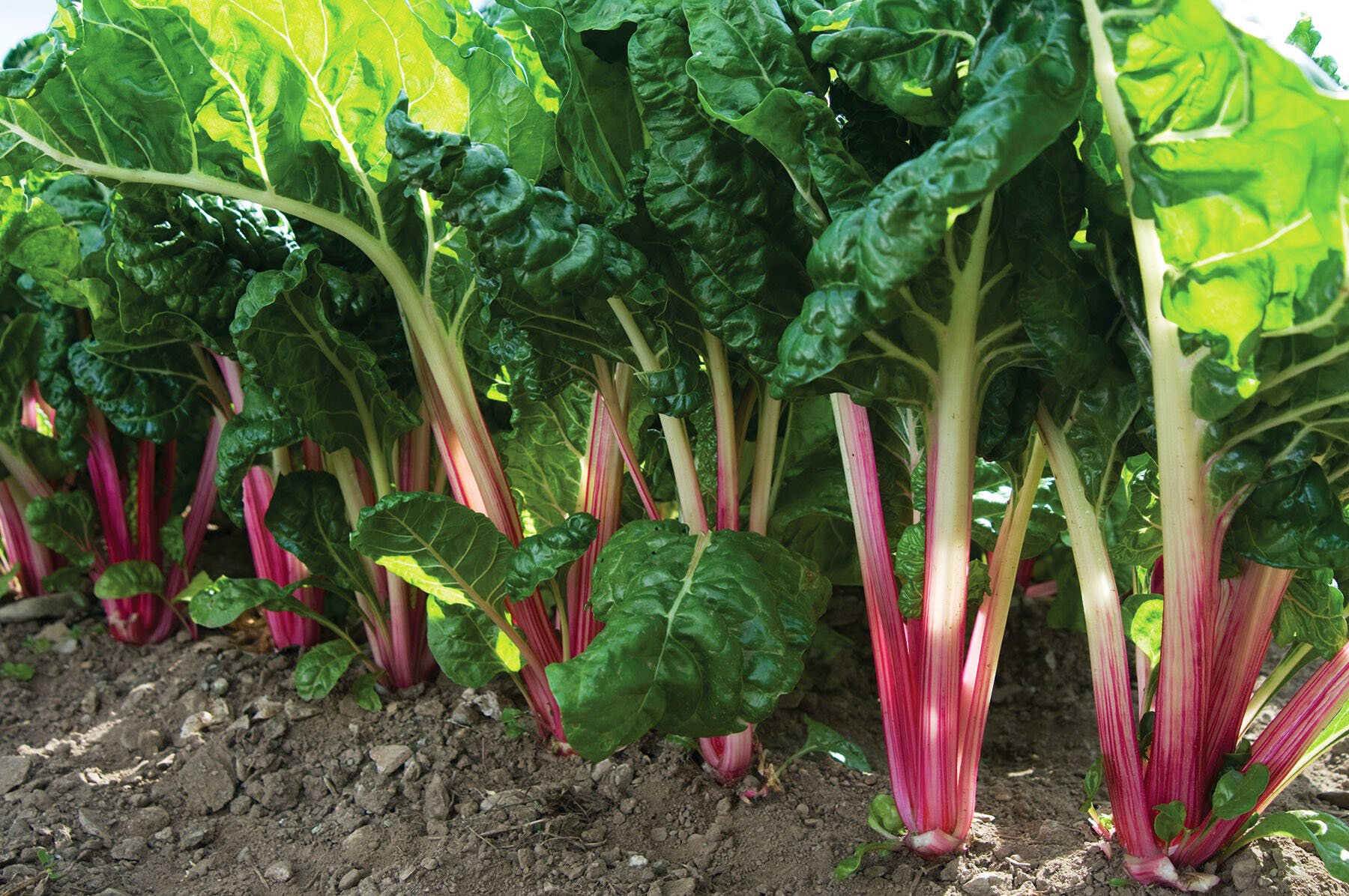Peppermint Swiss Chard
Beta vulgaris • Open-Pollinated
This is a guaranteed winner. Just look at it.
JOY MAX SCALE ✦✦✦✦✦
The ultimate chard. Neon pink petioles contrast with white-veined, dark green deeply savoyed leaves. An absolute show stopper.
JOY MAX QUALITIES
Chard is a superfood, high in vitamins A, C, and K. It is less bitter than spinach and beet greens but you eat it the same way
These stems keep their colors even after light cooking, and have a rich, crisp, peppery bite.
Grows well in containers
Will wilt in direct summer sun like a total diva but will recover every single day if given just a teensy bit of shade in the afternoon; choose location carefully.
Can be planted in the fall or spring in central Texas and climates with mild winters.
Beta vulgaris PLANT HEIGHT 20” PLANT WIDTH: 12-16” SEED SPACING: 3” SEED DEPTH: 1/2” IDEAL TEMP: 60-80º GERMINATION: 5-20 Days DAYS TO MATURITY: 60 SOIL: Rich, well-drained LIGHT: Full Sun / Needs shade in summer
Basic Growing Information
Direct seed or transplant if you prefer. To speed germination, soak seeds in water for 24 hours prior to planting. Sow seeds 1/2” deep, 2 to 6 inches apart. from midspring and on into midsummer (fall where winter is mild). Thin to 4–6" apart for larger leaves. Plant new seeds every 10 days if you’ll be harvesting regularly. Chard is best treated as a “cut-and-come-again” crop. This harvesting technique involves taking only a few older leaves at a time from each plant, allowing younger leaves to continue growing for additional harvests later in the season.
Tips for Growing Swiss Chard
Keep plants well watered during dry periods to promote rapid, uninterrupted
growth.
Begin harvesting leaves when they reach 5-6 inches or are large enough to use. Break off the outer leaves at their base, taking care not to damage the inner leaves.
Plants that are harvested regularly will continue to produce new growth from the center of the plant.
Both the leaves and stalks are edible raw, steamed, and sautéed, but avoid the lower 2-3 inches of the stalk as it may be fibrous and tough.
Swiss chard may be blanched and frozen. Stems may be pickled.
Companion Planting
Allysum, tomatoes, everything in the cabbage or Brassica family takes to growing with chard quite well, as does anything in the Allium family. Beans are excellent chard companion plants. The Swiss chard will be ready to harvest by the time the beans are getting ready to have a growth spurt and over shadow the chard. In the meantime, the chard shades the tender bean seedlings and helps to retain soil moisture. Radishes, lettuce and celery also thrive when co-mingled with Swiss chard. AVOID: Most herbs with the exception of mint. These two make great garden buddies. Chard also shouldn’t be planted near potatoes, corn, cucumbers, or melons. All of these will either compete for soil nutrients or foster harmful pests.



